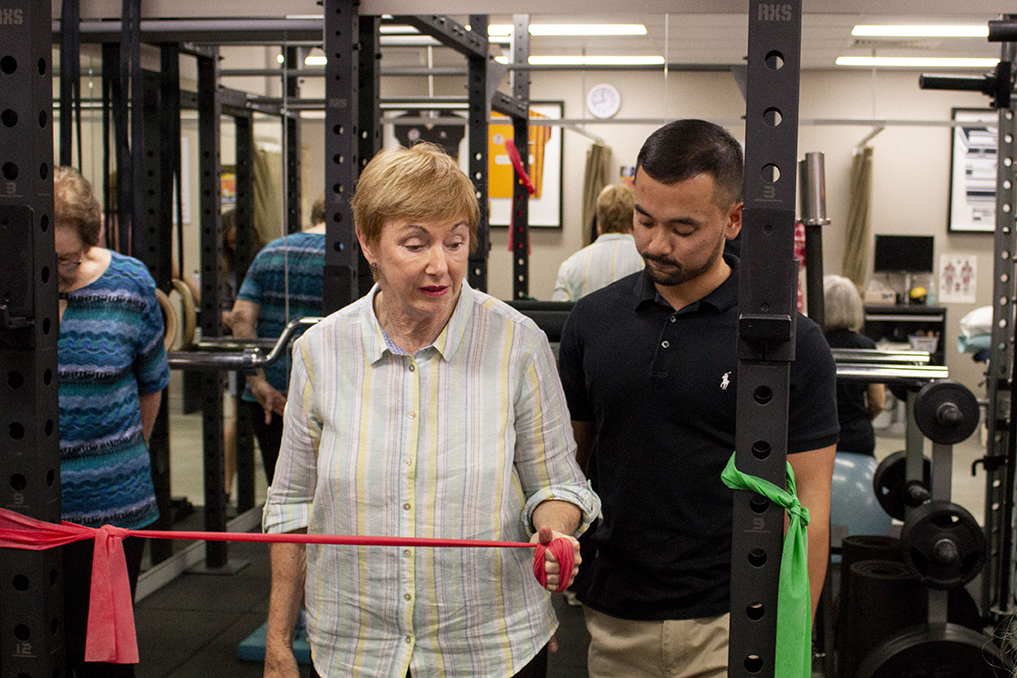DE QUERVAIN’S TENOSYNOVITIS, ALSO KNOWN AS DE QUERVAIN’S SYNDROME IS A PAINFUL INJURY AFFECTING THE TENDONS OF THE THUMB THAT RUN ALONG THE WRIST.
These tendons assist in moving the thumb and wrist with the addition of controlling weight and mobility of the joint.
More often, De Quervain’s Syndrome is an overuse injury due to increased forces through the tendon.

Repetitive movements requiring sideways movement of the wrist while gripping the thumb (eg. hammering, drilling, pruning gardens) may make one liable to sustain to this wrist injury.
This can lead to eventual thickening of the tendon and irritation that can cause pain around the thumb side of the wrist, specifically the radial styloid.
The main symptom of De Quervain’s tenosynovitis is pain over the thumb side of the wrist or otherwise know as the radial side. It may develop suddenly or gradually with the repetitive movements. It is worse with use of the hand and thumb, especially forceful grasping, pinching & twisting.
There may be swelling at the site of pain and “snapping” when the thumb is moved. Due to pain and swelling, thumb movement may be reduced.
Night pain can also occur particularly in worse case situations. People may not be able to grip if this is quite sore.
The initial treatment is to see your physiotherapist straight away. A scan may be requested especially if it is thought that an injection may assist with pain relief. A splint to immobilise the wrist and thumb can be worn especially if repetitive activites are required by the patient. The splint can be worn day and night.
De Quervain’s Tenosynovitis Symptoms:
- Swelling over the thumb side of the wrist
- Occasionally a snapping or catching sensation when moving the thumb
- Difficulty grasping and holding onto objects with the thumb

How can Physiotherapy help?
General Physio is an important tool in assisting with the management and identifying factors which may have contributed to De Quervain’s Syndrome. This may involve ergonomic changes or modifying tasks to reduce strain through the thumb tendons. Manual therapy, nerve glides and a splint is often prescribed to allow irritation around the wrist to settle.
If you are experiencing De Quervain’s tenosynovitis, or otherwise need physio for arm pain, the physiotherapy Brisbane team at Pivotal Motion can help. Located in Newmarket Brisbane. Book an appointment online or call our friendly staff on 07 3352 5116.
De Quervain’s Tenosynovitis Frequently Asked Questions
What Happens if De Quervain’s Syndrome remains untreated?
Over time the impacted area may grow stiffer which may lead to the tendon becoming permanently restricted. Furthermore, the amount of pain one experiences, as well as where it occurs, may increase and result in it being difficult to use your hand.
Will De Quervain’s Tenosynovitis simply go away?
No, it will not. Treatment is required to facilitate the healing process because without treatment the condition may become worse and lead to long term problems. Reach out to our team to discuss possible treatment options by calling 07 3352 5116 or book an appointment online.
What Makes De Quervain’s Tenosynovitis Worse?
Any repetitive activity that involves moving the wrist or hand, particularly in the thumb area. A few key causes include heavy lifting, gripping or pinching motions, repeatedly flexing the wrist up and down while the thumb is extended and repetitive hand movements like typing or texting.

